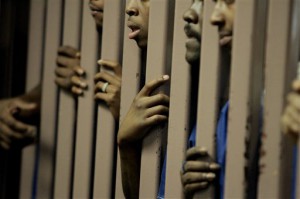Restorative Justice
The Maori, the indigenous people of New Zealand, approach justice a little differently. The Western legal system has gradually refined an approach to determine the guilt or innocence of the accused and then mete out punishment for the guilty. The Maori approach, a version of restorative justice, focuses instead on the victims. Rather than simply punishing the individual who commits an infraction, the Maori seek to restore relationships that have been damaged by the crime.
The Maori approach, a version of restorative justice, focuses instead on the victims. Rather than simply punishing the individual who commits an infraction, the Maori seek to restore relationships that have been damaged by the crime.
The Maori word for this approach is tikanga: justice or fairness based on customary practice and mediated through relationships based on extended family and subtribe. When a conflict occurs, meetings at the family and subtribe level take place to determine through consensus how to make things right for the victim and the community. The underlying principles of the Maori attempt to achieve justice — through principles of what is right (tika), having integrity (pono), and having compassion (aroha) — can be found in other systems of criminal justice.
The New Zealand legal system, for instance, has attempted to incorporate some of these principles. Take the case of an assault on the streets of Aukland in 1998. Early one morning a knife-wielder attacked a man, demanding money and leaving him with six stab wounds. After being apprehended, the offender pleaded guilty and, in a restorative justice conference that brought the two men face to face, agreed to pay restitution. The victim, in turn, argued that his attacker should not go to jail. After the conference, a district court judge added 200 hours of community service to the cost of restitution. In his verdict, the judge noted that “the Restorative Justice report makes it very clear that they had intimate and personal communications which could well have achieved more by way of healing of attitudes than anything else.”
In New Zealand, conventional approaches have created a situation in which nearly 90 percent of those released from prison are back in court again within five years. It is no surprise, then, that the Maori alternative has won many supporters. But implementing these principles to deter crime in modern society, when bureaucracy has diminished face-to-face contact, remains a challenge for New Zealand as for all societies.
The criminal justice system has moved far from the Maori principles of tika, pono, and aroha. In many countries – Russia, North Korea, Brazil – the prison conditions are simply inhumane. There is overcrowding, police brutality, unsanitary facilities, and widespread corruption.
In the supposedly more advanced United States, the criminal justice system is also deeply flawed. Of the 25 countries that used the death penalty in 2004, the United States executed more people than any country except China, Iran, and Vietnam. The Death Row population is disproportionately African-American as is the prison population as a whole. According to Human Rights Watch, African-Americans are only 13 percent of the U.S. population but comprise 30 percent of people arrested and 49 percent of people in prison. Racism – and a bias against the poor – pervades the system from beginning to end.
Delivering the prisons into private hands, a trend in the United States, has not solved any of these problems and has only made increased rates of incarceration a plus for shareholders. The U.S. prison population has dramatically increased over the last fifteen years. There are now over 2.1 million people in U.S. jails. Much of the increase is a result of stricter drug sentencing laws. “Tough on crime” platforms have been popular among politicians.
The escalating caseload in the U.S. court system that has resulted from such prosecutorial zeal has been a major motivating factor in the growing interest in alternative dispute settlement approaches. Restorative justice, however, is more than simply a method of reducing the docket. As in the New Zealand example, this alternative approach attempts to shift the discussion away from inserting offenders into the prison complex, where they often learn how to be better criminals rather than better citizens, and toward repairing the relationships that have been harmed by the crime. In this sense, restorative justice at the local level can be compared to the truth and reconciliation processes – in South Africa, El Salvador, and elsewhere – that have attempted to balance the urge for justice and the desire for social peace.
Restorative justice approaches seem to work with relatively minor crimes, but how well do they work with more serious crimes? The decrease in recidivism rates in restorative justice cases are relatively small – 8 percent reduction for adults and 2 percent reduction for youth according to one story – so how can these rates be improved, particularly among youth? Is the disproportionate number of African Americans in the U.S. jail system a function of racism or discrimination against the poor? If the penal system is broken beyond repair, what can replace it?
On a trip to Provisions, you can read about how restorative justice works in Mark Umbreit’s Facing Violence, go online for the latest U.S. Prison Statistics, see how 57 contemporary artists address the criminal justice system in Capital Art, listen to Jon Langford (of the Mekons) rock against the death penalty in The Executioner’s Last Songs, and watch the film Dead Man Walking for a unblinking view of Death Row.


